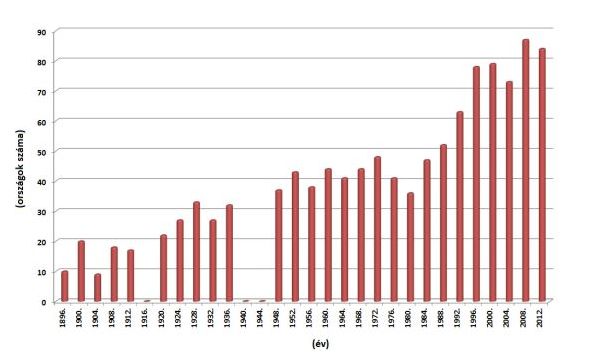Lows of spreading
When only few elements of innovations are adapted it is called selective spread (e.g.: valley ball is played with simpler rules at seashores and sands than that of the original ones). The notion of stimulation diffusion means that due to some cultural effects a local population is made to adopt and acclimatize sports whose few elements differ from the original ones (e.g.: the predecessor game of baseball was played already in the 18th century. It was called then rounders. Immigrants settling in New England spread it and it was gradually formed into baseball by the Americans).
Naturally there are several other lows and rules of the sport-cultural diffusion. Away from the centre the effects of innovation are weakening (distance-time impairment), but the norms of societies can also refuse or impede the non-wanted cultural elements (Trócsányi, A., - Tóth, J. 2002). If these phenomena were different then, for example, India, the 17, 3 % of the earth’s population, have not won only the 0, 2% medals of summer Olympic Games. The other main reason for the spread of cultural elements is the impact of neighbours. They may function as multipliers (e.g.: if our neighbour bought a fitness machine we tend to purchase the same type).
Migration characterised even our ancestors: the first Olympic Games were visited with the intensions of competing or enjoying the games. Nowadays migrations have speeded up mainly because of the huge intensity of technical development which restricted the notion of geographical distance (Haggett, P. 2006). The frequent territorial mobility has resulted in the development of competition systems as well as sport tourism (e.g.: (Champions League). This process is accompanied with the business world’s interest, the development of transport and telecommunication has globalised sports. Not long ago mainly the athletes of developed European and North-American countries attended world competitions, but tendencies have changed recently which means that more and more Asian and African athletes participate in competitions. It is proved by the growing number of medal awarded athletes at the Olympic Games (see figure 5).

Figure 5. The changes of the numbers of countries whose athletes have been awarded with medals at the Olympic Games (1896-2012). Source: medalspercapita.com. Editing by the author’s